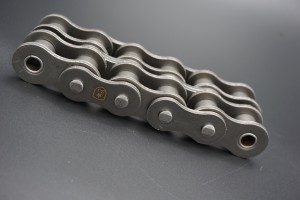Roller chains are commonly used in various industrial applications to provide efficient power transmission for different machinery. However, a common problem that arises with roller chains is polygonal action. Polygonal action is the unwanted vibration and uneven running of the roller chain as it moves around the sprocket. This phenomenon can lead to increased noise, accelerated wear and reduced overall performance. In this blog, we will explore the causes of polygonal action in roller chains and discuss effective ways to reduce polygonal action, ensuring smoother operation and extending chain life.
Understanding Polygon Motion Problems:
Polygonal action occurs due to the geometric relationship between the chain drive components, specifically the natural frequency of the chain and the pitch of the sprocket. When the natural frequency of the chain coincides with the pitch of the sprockets, a polygonal effect occurs, causing vibration and irregular motion. Common symptoms of polygonal action include torque fluctuations, increased noise levels and reduced efficiency.
Ways to reduce the effect of polygons:
1. Proper chain selection: The first step in reducing the effect of polygons is to select the proper roller chain. Analyze application requirements including speed, load and environment, taking into account factors such as chain size, pitch and mass. Choosing the correct chain will ensure better engagement with the sprockets, minimizing the risk of vibration.
2. Lubrication and Maintenance: Regular lubrication is essential to minimize friction and excessive wear, which increases polygonal action. Follow the chain manufacturer’s recommendations for greasing intervals and use a high-quality lubricant. Additionally, regular maintenance, including tension adjustments and routine inspections, can identify and correct potential problems before they cause polygonal action.
3. Proper Chain Tension: Maintaining the correct tension on the roller chain is critical. Too much tension can cause increased polygon action, while not enough tension can cause the chain to slack and possibly jump off the sprockets. Follow the manufacturer’s guidelines to determine the best tension for your specific application and adjust as needed.
4. Damping method: Using the damping method can effectively reduce the polygonal effect by absorbing vibration. One way to do this is to use an elastomeric part, such as polyurethane, rubber or silicone, inserted between the chain and sprocket teeth. These components absorb vibration and minimize polygonal action for smoother running and quieter operation.
5. Sprocket Design: A well-designed sprocket can significantly reduce polygonal effects. Sprockets should have rounded teeth, symmetry, and adequate clearance between adjacent teeth. These design elements improve chain engagement, reducing vibration and the potential for polygonal action.
The problem of polygonal action can be a significant challenge when it comes to smooth and efficient operation of roller chains. However, by taking the necessary steps to reduce this phenomenon, such as selecting the correct chain, proper lubrication and maintenance, maintaining proper tension, implementing damping methods, and employing well-designed sprockets, operators can mitigate the effects associated with polygonal action. question. By following these guidelines, downtime and maintenance costs can be minimized while maximizing overall productivity and efficiency. So ensure your roller chain performs at its best by reducing polygonal action and reaping the benefits of smooth operation and extended chain life.
Post time: Jul-27-2023

